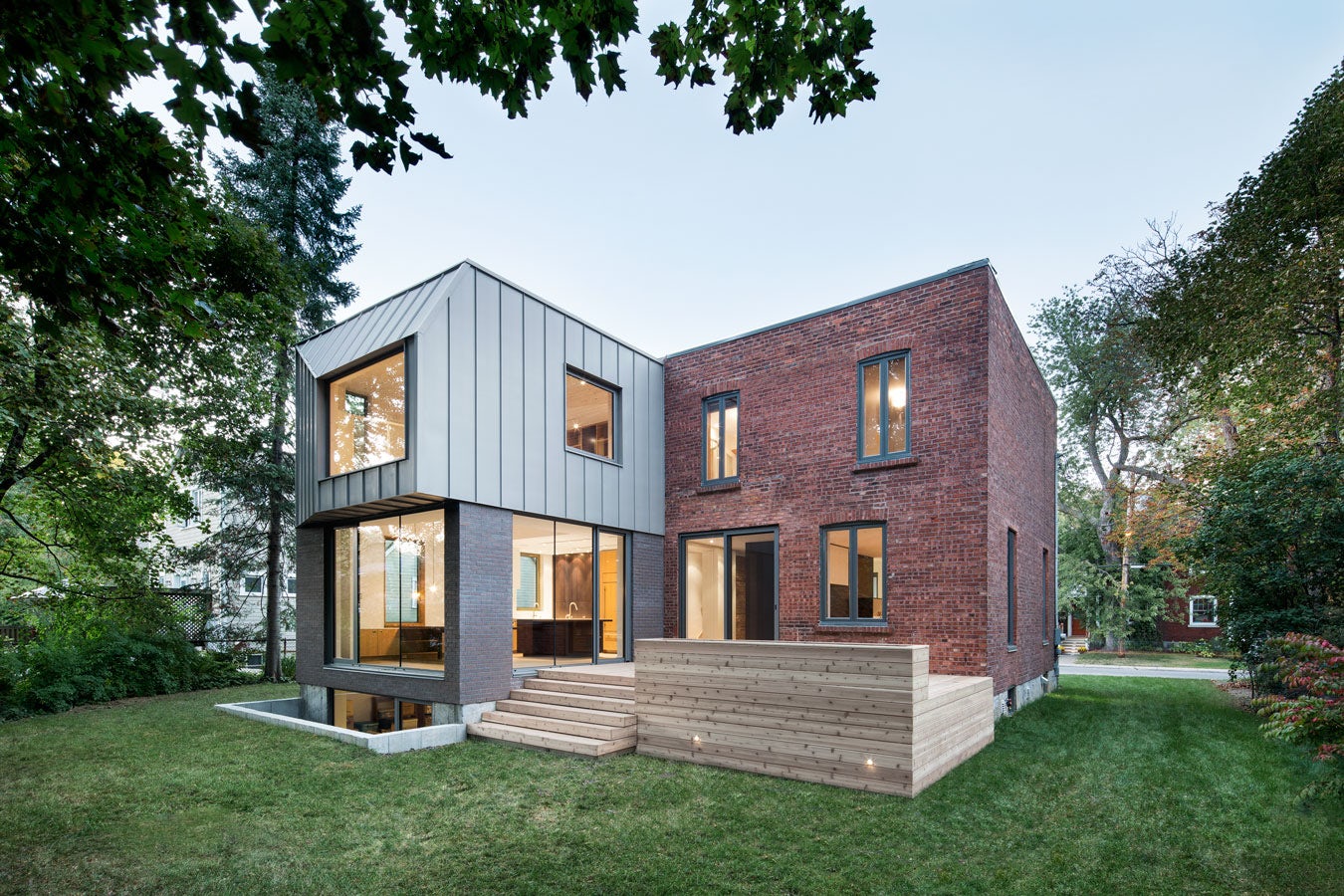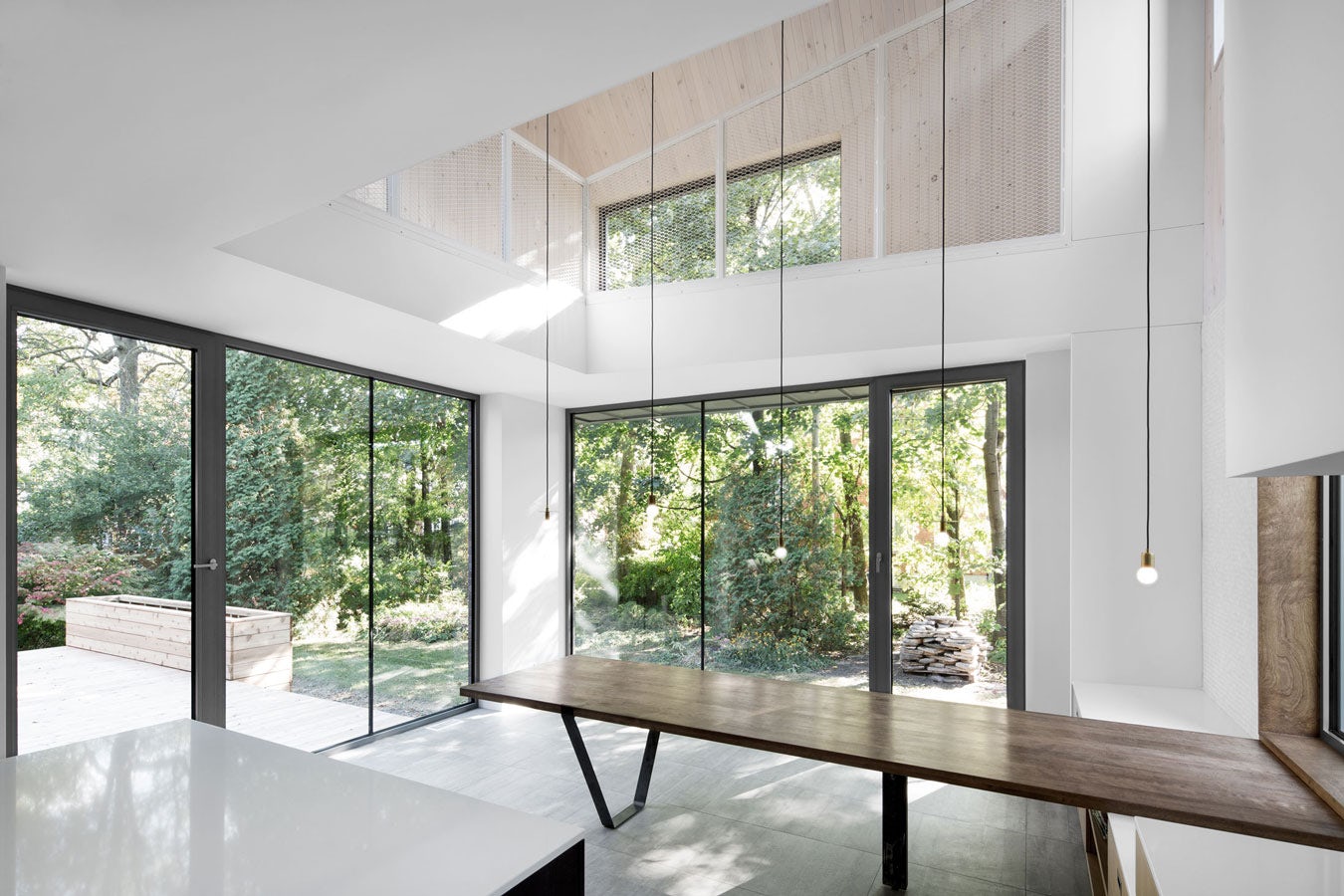Architizer's new image-heavy daily newsletter, The Plug, is easy on the eyes, giving readers a quick jolt of inspiration to supercharge their days. Plug in to the latest design discussions by subscribing.
Composed of red brick, this set of buildings incorporates one of the longest-lasting and strongest building materials in the world. While the stylistic uses of brick have undergone shifts and transitions, clearly recognizable brick construction has remained a mainstay for centuries. With such resiliency, contemporary additions to red brick buildings represent an interesting and alluring incongruity.
With several projects in Melbourne, London and other post-industrial cities, it is fascinating to note how the use of brick is intertwined with the Industrial Revolution. For example, in industrial London, one reason that red brick building grew exponentially was so buildings remained visible beneath heavy fog and smoke. Today, modern additions have a spiky geography, noticeably concentrated in rich, post-industrial nations around the world — a reminder that architectural trends are temporal and starkly tied to socioeconomic circumstances.
Despite the resilience of brick and mortar buildings, the following clients called for a new set of demands. The push for these additions arises from many recurring problems associated with old brick buildings and housing design: too little light, too many rooms and not enough space. In response to such concerns, new materials are applied in order to offer functional and viable solutions for each client’s needs.

© Architecture Architecture

© Architecture Architecture

© Architecture Architecture
Turnaround House by Architecture Architecture, Melbourne, Australia
Turnaround House is a renovated and extended Victorian-era home, which called for a new open-floor plan. Originally, the home was almost permanently in shadow, caused by unsightly neighboring buildings. However, Architecture Architecture designed a U-shaped extension that created a private courtyard and increased incoming sunlight. The interaction between the indoors and outdoors is further understood through the contrast between exposed recycled brick and new white timber boards.

© Phillips Tracey Architects

© Phillips Tracey Architects

© Phillips Tracey Architects
Whitton Road by Phillips Tracey Architects, London, United Kingdom
For this project, the strong original character of this double-fronted traditional Victorian house was juxtaposed with a contemporary addition. Existing materials were used as points of reference in order to create a rich and cohesive palette, including the use of exposed whitewashed brick walls inside.

© Filip Dujardin Photography

© Filip Dujardin Photography

© Filip Dujardin Photography
House Aartrijke by atelier tom vanhee, Aartrijke, Belgium
Situated in an agricultural area, the original typology of this former farmhouse was used in a contemporary way, in order to create an enlarged dwelling. Two additional volumes with pitched roofs and a chimney-shaped skylight were designed in a finished wood. While both old and new are starkly visible within the finished project, this building represents a peaceful collaboration between the two.

© Kitchen Architecture

© Kitchen Architecture

© Kitchen Architecture
Glass Box Extension on Thatched Cottage by Bulthaup by Kitchen Architecture, United Kingdom
For this project, Bulthaup were challenged to create a unique glass box extension that would not change or disrespect the integrity of the original home. The new glass box houses a modern, fully equipped kitchen, which creates the sense that residents are cooking, dining and entertaining in the home’s garden. Huge sliding doors make the transition from inside to outside seamless, pleasant and simple.

© _naturehumaine

© _naturehumaine

© _naturehumaine
Dulwich Residence by _naturehumaine, Montréal, Canada
At Dulwich Residence, the clients had outgrown their 1920s home and wanted a contemporary extension that would both harmonize with their existing structure and highlight its brick exterior. The extension has a large window that frames the outdoor space, and becomes an area in which to relax, gaze out and maintain contact with the property’s surrounding garden.

© Neil Dusheiko Architects

© Neil Dusheiko Architects

© Neil Dusheiko Architects
Timber Fin House by Neil Dusheiko Architects, London, United Kingdom
Framed in oak and clad in Siberian Larch, this new extension is designed to be read as a separate volume, rather than mimicking the brick character of the existing building. The playful design is meant to track the sun and create a positive atmosphere in the garden, while simultaneously creating new functional family space that includes a living room and an extra bedroom.

© Haworth Tompkins

© Haworth Tompkins
Dovecote Studio by Haworth Tompkins, Snape, United Kingdom
Directly at the boundary between land and sea, Dovecote Studio is a resurrected ruin that sits among other industrial buildings on the Suffolk coast. The new building embraces past decay and aging, as only minimal repairs were made to the brickwork prior to creating the new structure. Like the hull of a ship, the building is fully welded into a single enclosure in order to achieve weather tightness.

© Rhiannon Slatter

© Rhiannon Slatter

© Rhiannon Slatter
Parkville by Steffen Welsch, Melbourne, Australia
This house, like many older structures, was ridden with insufficient natural light and deficient space planning. The solution is a confident, single intervention: a glazed atrium dining area, which links disparate spaces, brings light into the entire building and creates ventilation.
Architizer's new image-heavy daily newsletter, The Plug, is easy on the eyes, giving readers a quick jolt of inspiration to supercharge their days. Plug in to the latest design discussions by subscribing.









